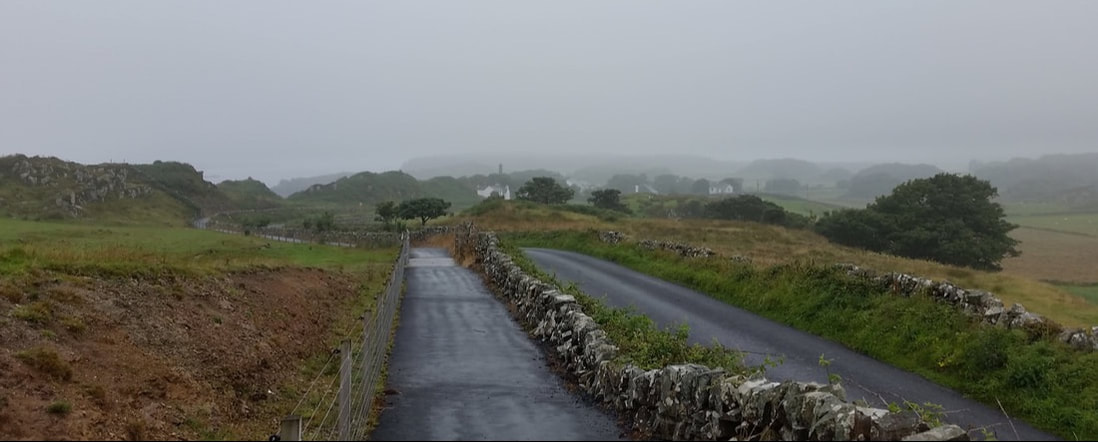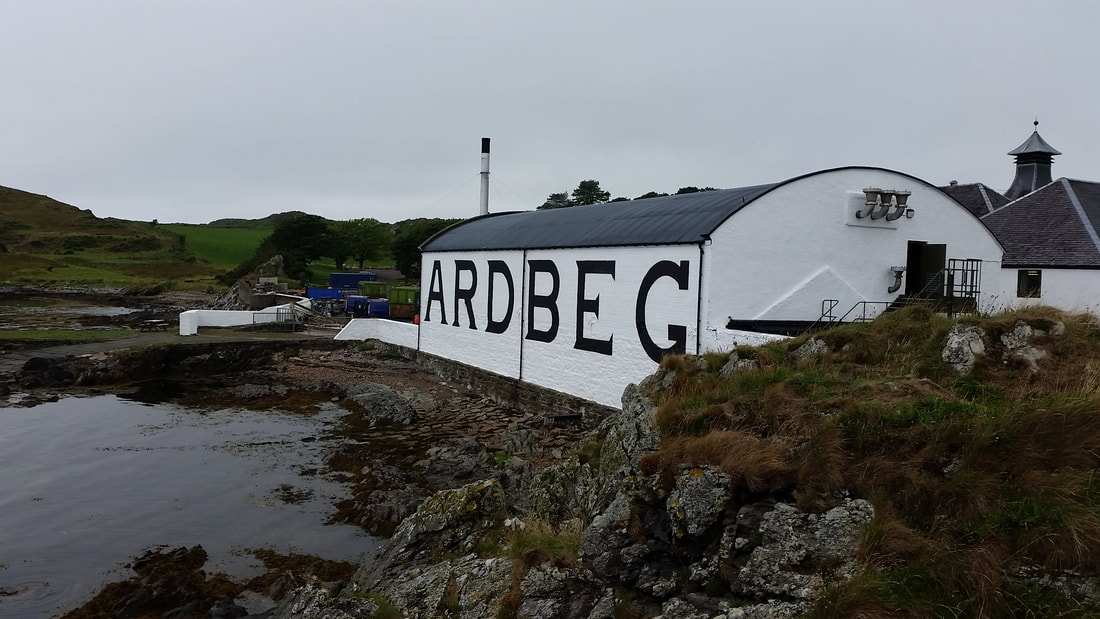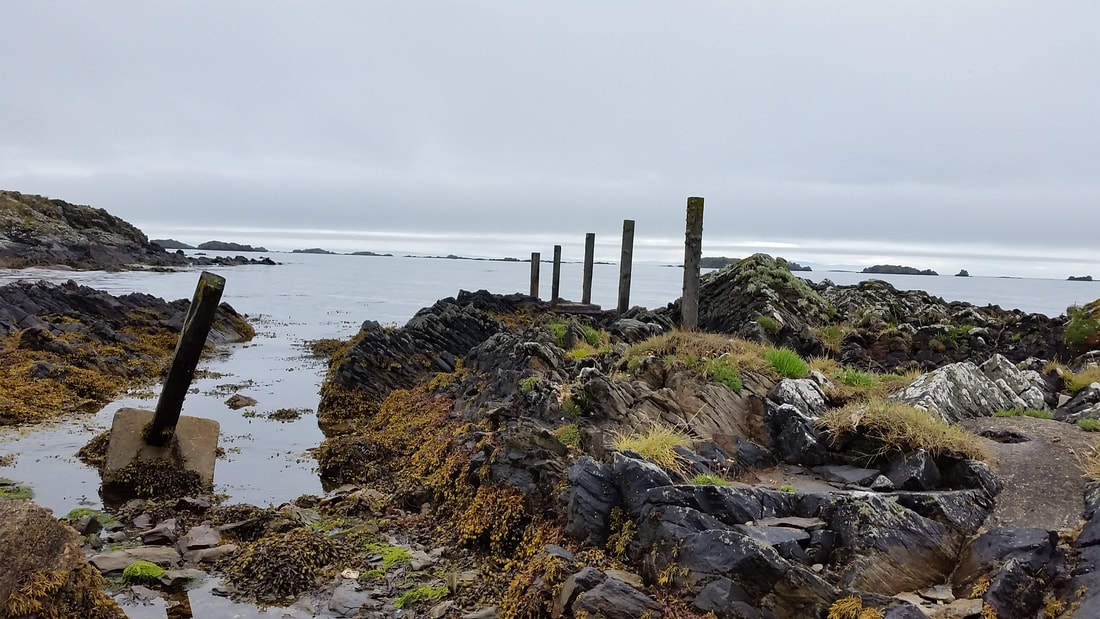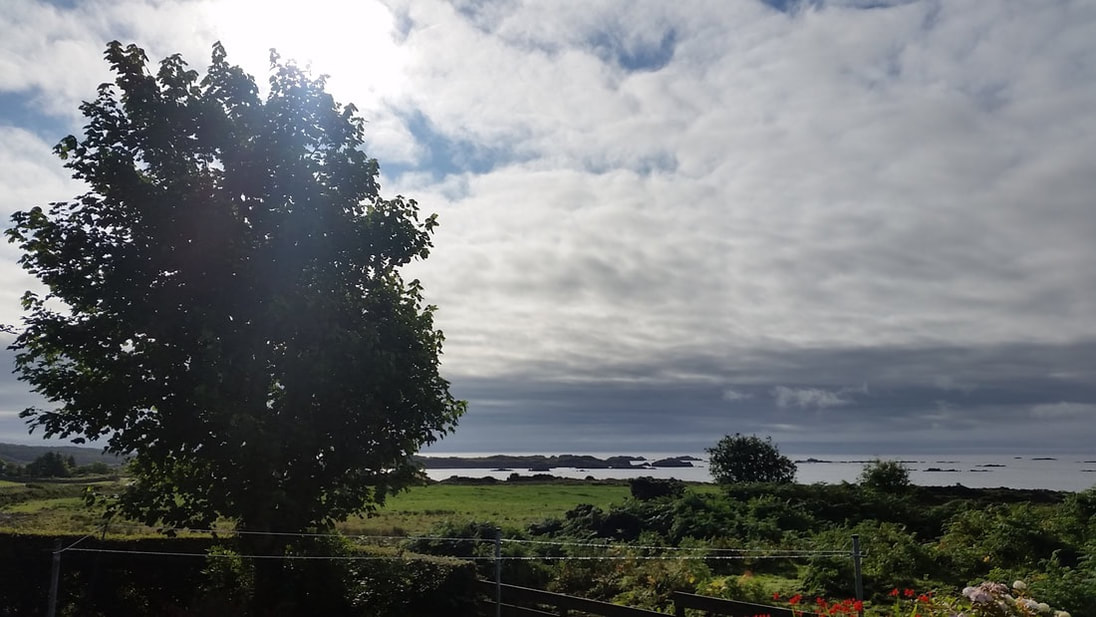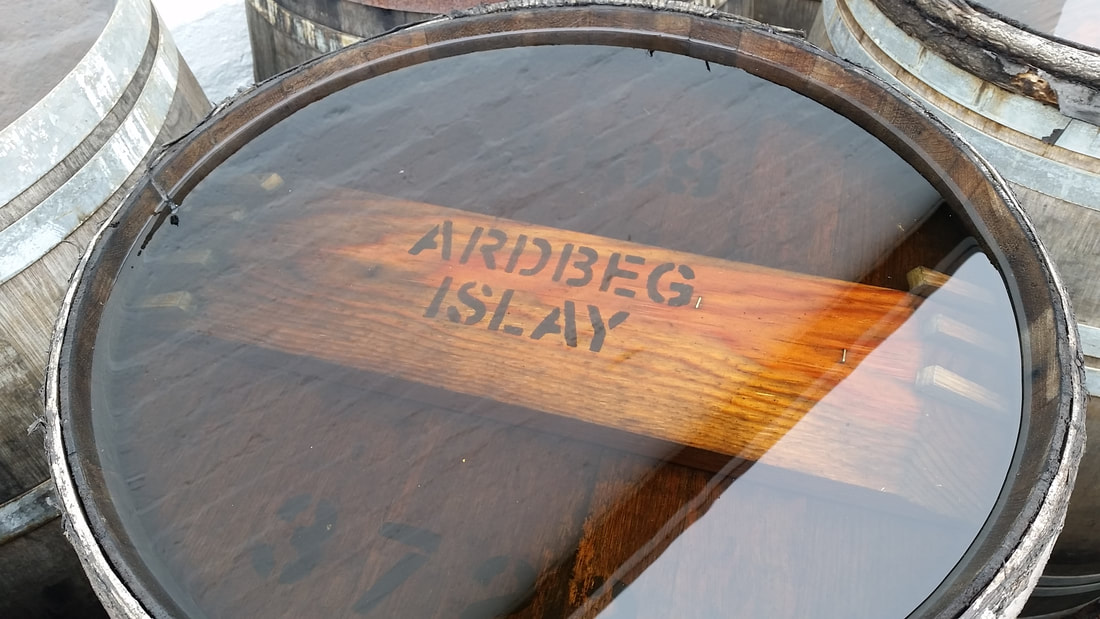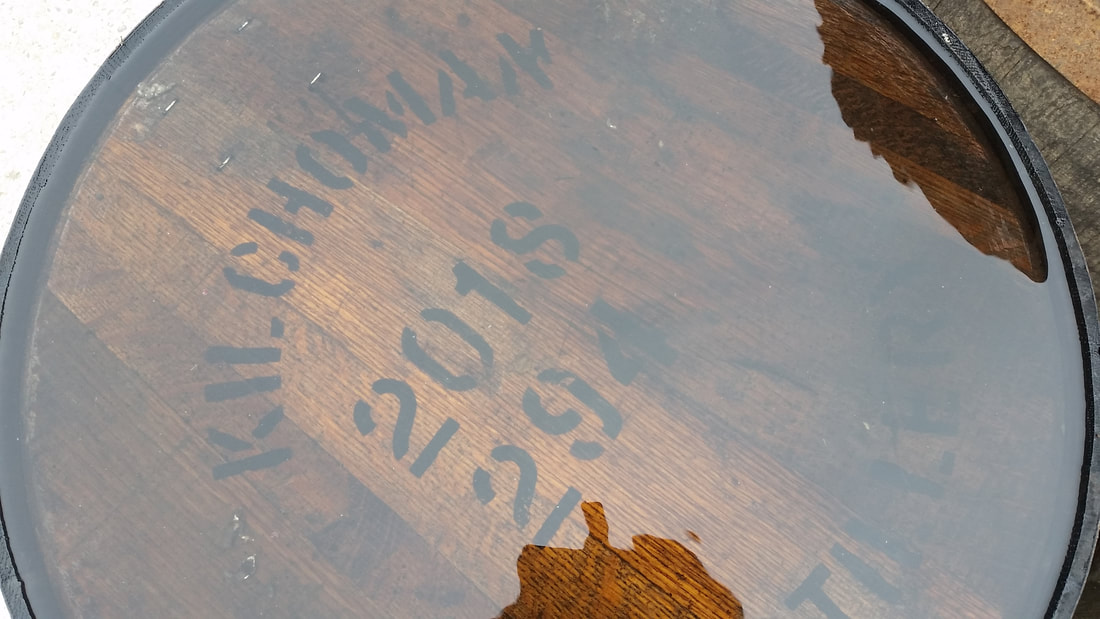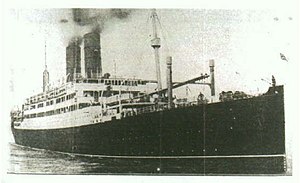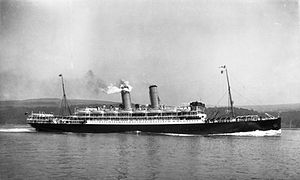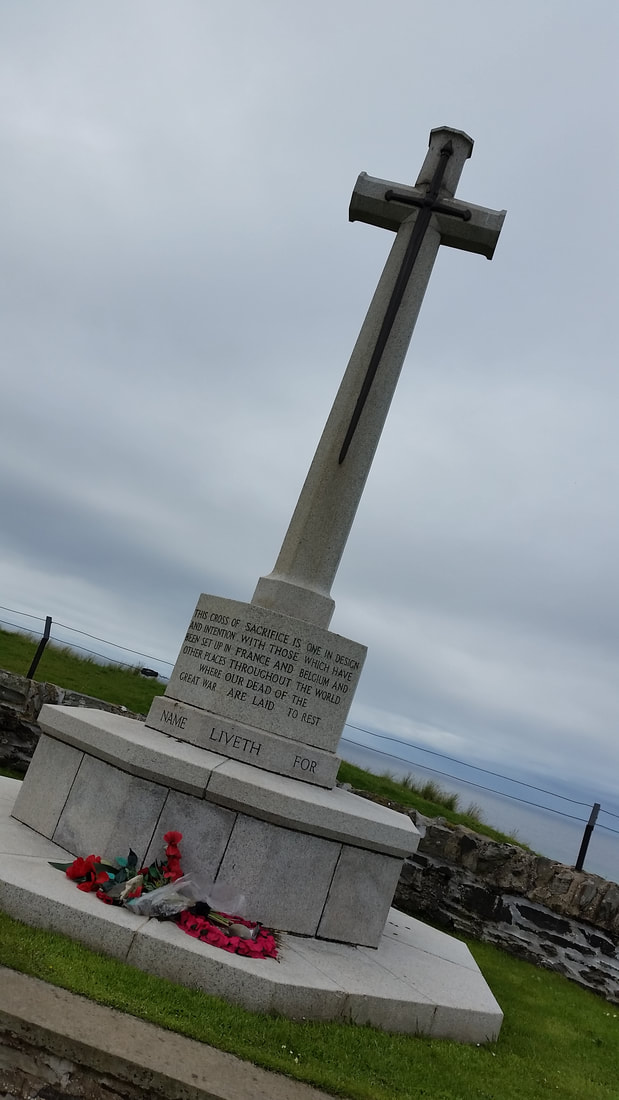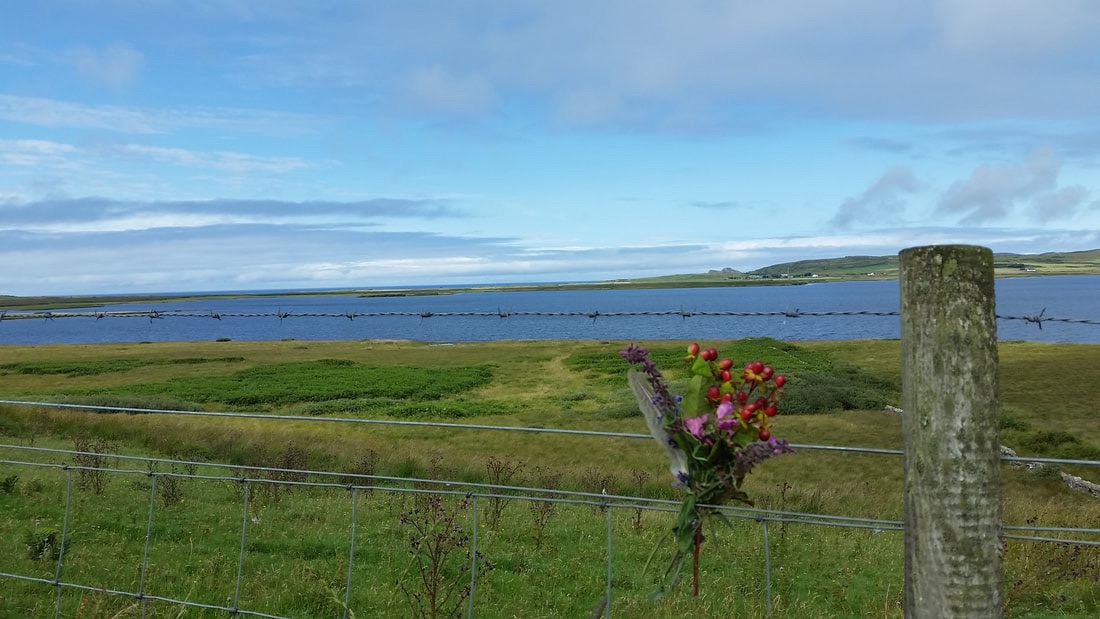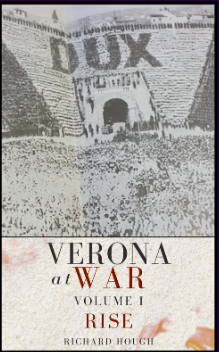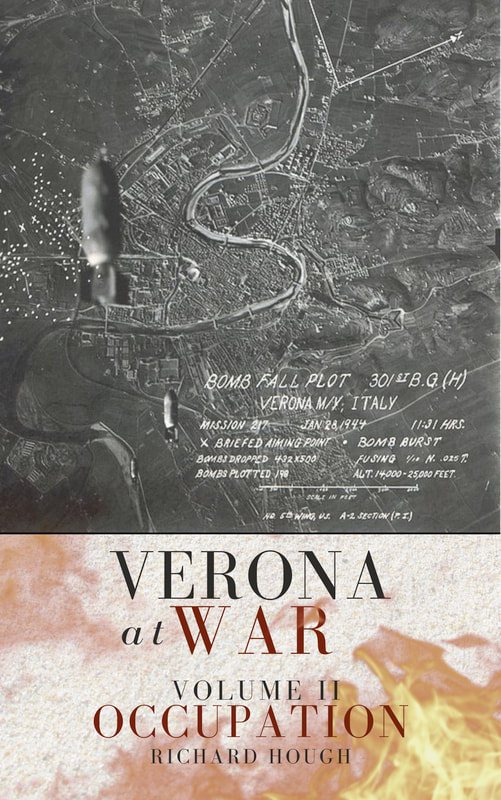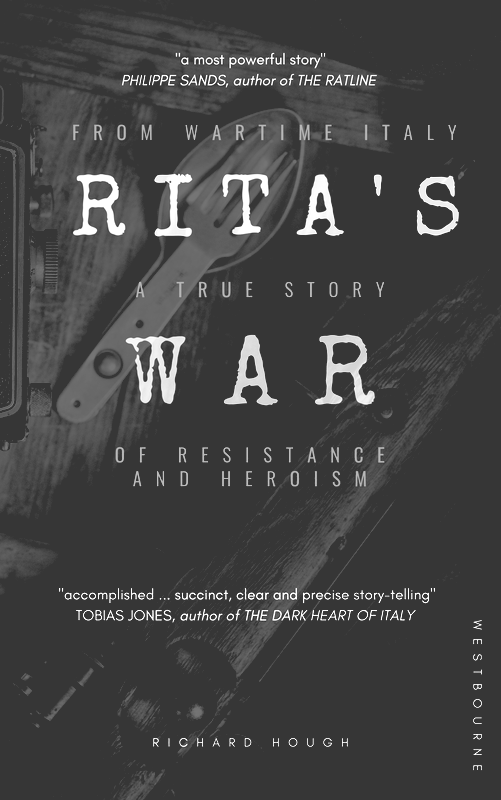|
A lively crossing
After the reckless hedonism of Ibiza and the indulgent serenity of Sicily (during which I explored the notorious mafia town of Corleone), Islay was the third and final stop on my summer island-hopping itinerary. We took the 6pm ferry from Kennacraig to Port Ellen and, after a lively crossing, we were soon making our way towards the cottage at Ardbeg that would be our base for our short stay on the island. For a whisky enthusiast like me, there can be few more exhilarating journeys than that ten minute drive from Port Ellen to Ardbeg, as we passed by the world renowned distilleries of Laphroig and Lagavulin, before arriving at our cottage, conveniently located just around the corner from the distillery at Ardbeg.
A calamity at sea?
The windswept island of Islay lies between Scotland's rugged west coast and the mighty Atlantic ocean. From nomadic hunter-gatherers to Celtic kings, Norse invaders to the ancient Lords of the Isles, these islands and their tempestuous waters have known more than their fair share of drama, heroism and tragedy. I was vaguely aware that some maritime calamity had befallen these islands during the Great War but, until my visit this summer, was completely ignorant of the precise details. In fact, as I soon learned, disaster had struck Islay not once, but twice, with the tragic loss of nearly 700 souls, most of them American infantrymen. But what on earth where all these American troops doing in the waters of Islay? And what happened here that resulted in such a catastrophic loss of life?
War
On 20 June 1914, Archduke Franz Ferdinand, the heir to the throne of Austria-Hungary, and his wife, Sophie, Duchess of Hohenberg, were shot and killed in Sarajevo, the capital of the province of Bosnia-Herzogovina. At first it seemed that the assassination was just an isolated act of localised terrorism. Few could have foreseen that it would trigger a chain of events that, just a few short months later, would result in the United Kingdom declaring war on Germany. Blockade On 2 November, as the conflict intensified, the United Kingdom, in the hope of restricting the maritime supply of goods to the Central Powers, began a naval blockade of Germany. The blockade had a devastating impact on German supplies and morale. By December 1918, it was claimed that more than three-quarters of a million German civilians had died from starvation and disease. In response, Germany launched a campaign of unrestricted submarine warfare, with the objective of starving Britain out of the war. America enters the fray As a consequence of this unprecedented attack on merchant shipping, the United States, which for nearly 3 years had remained officially neutral, was finally drawn into the increasingly barbaric conflict.
Crossing the Atlantic
The Western Front, the brutal system of trenches which eventually stretched from the North Sea coast of Belgium southward across France, remained the main theatre of war. To reach the battlefront, American troops first had to cross the Atlantic. American doughboys crossing the Atlantic endured appalling conditions in troopships that were unfit for purpose and terribly overcrowded. On top of winter storms, inadequate sanitation and a virulent flu virus, that would become known as Spanish flu and would be later be identified as the H1N1, the constant threat of the U-boat menace made the crossing a truly perilous undertaking. And that was all before these poor young lads, many of whom had never stepped foot on a boat before, had even reached battlefront. Amongst the vessels requisitioned for the purposes of transporting American troops across the Atlantic were HMS Tuscania and HMS Oranto.
Onboard HMS Tuscania
Named after a picturesque Italian hillside town to the north of Rome, SS Tuscania had been a luxury liner of the Cunard Line but with the outbreak of war is refitted and put into service as a troopship. On 24 January 1918, she sets sail from Hoboken, New Jersey, with 384 crew and 2,013 soldiers onboard. Three days later she joins a 12 ship convoy that is zig-zagging its way across the Atlantic towards Liverpool. On 4 February, the convoy is joined by eight British destroyers for the final, most treacherous part of the voyage, as they enter "the submarine zone" - the part of the crossing where the ocean narrows into the shipping channels that lead to Britain's west coast ports. Torpedoed The following day, the convoy is just off the north coast of Ireland, preparing to make it's final manoeuvre towards Liverpool. Lurking just below the surface is UB-77, commanded by 29-year-old Kapitän Wilhelm Meyer. Just as those on board the Tuscania are catching their first glimpse of the rugged Scottish coastline, Meyer is preparing to attack. At 7.40 pm he fires two lethal seven-metre long G-7 torpedoes. Despite intense vigilance, Tuscania is caught off guard. With a devastating explosion, one of the torpedoes strikes her amidship, near the boiler room. Under strict orders not to risk coming to the aid of a stricken ship, the rest of the convoy steams on towards Liverpool, leaving the Tuscania to meet its grim fate in the icy seas off Islay.
Rescue
As the Tuscania is foundering off the remote and inhospitable rocks and cliffs of the Mull of Oa, rescue destroyers are dispatched from the mainland. The evacuation of the ship is chaotic and confused. Those lucky enough to find lifeboats are picked up by the destroyers and naval trawlers. Royal Navy destroyer Mosquito manages to pull alongside the foundering Tuscania. It's a long-way down from the muster stations of the stricken ship to the plunging and rolling deck of the destroyer below, but some 300 officers and men manage to jump to safety. Another rescue ship, the Pigeon, then comes alongside the now badly listing troopship. Men slide down ropes to safety, but the escape isn't without its risks and several men perish as they jump from one ship to the other. In just 30 minutes, about 750 men and 14 officers have made it safely onboard the destroyer. Those less fortunate are swept towards the treacherous sea cliffs of Islay. Somehow a few exhausted and frozen survivors manage to make it ashore alive. Robert Morrison, a local farmer, wades out into the stormy waters up to his neck to rescue two men clinging on to a rock. He then climbs halfway up a 250 metre cliff to rescue another survivor. His act of bravery is not the only one that night. His sisters spend six hours baking scones to feed the exhausted and starving survivors. The remarkable effort of the people of Islay save the lives of many who would otherwise have died. Many of the bodies of the drowned servicemen wash up on the shores of Islay and are buried there with as much dignity and honour as the remote rural community can muster. It is the biggest loss of American military lives in a single day since the Civil War with over 200 casualties. Hardy islanders wept in the streets as carts of bodies pass by. But worse is to come.
Collision
Eight months later, another troopship, HMS Otranto (like the Tuscania, it is named after a small coastal town in southern Italy), is en route from America to the battlefronts of Europe. During a terrible storm, hurricane force winds and forty foot waves - experienced seamen had seldom seen such conditions, Otranto is involved in a devastating collision with another ship and founders off the rocky western shores of Kilchoman. Despite the appalling conditions we witness probably the single most significant act of courage in the entire tragic episode. "We shall go down together" Lieutenant Francis W. Craven is in command of HMS Mounsey, a Glasgow-built 'M' class destroyer that has been dispatched to provide assistance. Craven has spent more than half of his 29 years at sea and is a highly respected commander. Despite 40-foot waves, 70-mile an hour winds and the precarious condition of the 12,000-ton Otranto, Craven signals to Captain Davidson, commander of the stricken ship, that he is coming alongside. "Steer clear or you will lose your crew and your ship", the captain of the Otranto replies. "I am coming alongside. If we go down, we shall go down together", comes Craven's blunt response. Abandon ship Rearing and plunging in the mountainous waves, Craven somehow manages to manoeuvre his 896-ton destroyer alongside the heavily listing troopship. Ropes are thrown between the ships and soldiers are urged to jump for their lives. The order is given - "Abandon ship!" Soldiers face an agonising decision - jump or take their chances on board the sinking ship. Many mistime their jump and fall into the icy sea, others are crushed to death between the tossing ships. Those fortunate enough to land on rescue ship's deck suffer broken legs, arms and ribs. Despite the dangers, 600 men make it alive onto the Mounsey, which is by now seriously overladen and badly damaged from the battering it has taken coming alongside the Otranto. Craven takes the fateful decision to pull away from the Otranto. Captain Davidson can be seen waving farewell from the deck, nearly 500 men remain on board with him. Their fate is sealed. His bridge smashed, oil tanks punctured, boiler rooms flooded, upper deck decimated, both masts with the wireless and signalling gear swept away, boat laden with debris, water and frozen, injured, ill and exhausted survivors, the Mounsey limps towards the nearest port, Belfast. The last hope for the Otranto is that she will be swept towards the wide open sand of Machair Bay. It's not to be though as Otranto is cruelly swept towards the ragged rocky shoreline of the Rhinns of Islay, where she crashes against a submerged reef, the Botha na Cailleach. Her back is broken and her hull ripped asunder. For the remaining survivors on board the Otranto, it is a final fatal blow. Nearly five hundred men are suddenly thrown into the water. For the sick and the injured it means instant death. From here only twenty-one will make it ashore alive, two of those, despite the best efforts of the islanders, will die of their injuries. A heroic rescue Once again, local farmers and fisherman perform remarkable feats of heroism. Despite the appalling conditions, two teenage brothers, Donald and John McPhee, wade out into the wild surf off Kilchoman and, with the help of a shepherd's crook, save several survivors from certain drowning. By the following morning, the Otranto had been completely demolished by the heavy seas. Wreckage and bodies wash up on the coastline for weeks to come. In all, 470 men lost their lives, including 358 American soldiers, 96 crewmen and 6 French fishermen. Len Wilson's remarkable account of these events, The Drowned and the Saved, When War Came to the Hebrides, is available to buy here.
A final thought
Towards the end of the Second World War, my grandfather, who was from Coventry, served in the Far East on board HMS Loch Gorm. In the late 1970s, his daughter moved to Glasgow, and he spent numerous summers touring Scotland in search of the elusive loch after which his frigate was named. On our way to the Kilchoman Military Cemetery, where 73 sailors and marines of HMS Otranto are buried, we found Loch Gorm. We stopped for a few moments to remember my granddad. He would have loved it here. A navy veteran, with a lifelong affinity for the ocean, he loved Scotland - the drama of its landscape, the hospitality of its public houses, the warmth of its people. He would have understood the sacrifice, bravery and courage of those young men who travelled across an ocean to fight in a war. And then, like me, he would have gone for a quiet pint. |
AboutRichard Hough writes about history, football, wine, whisky, culture + travel and is currently working on a trilogy about wartime Verona.
|
